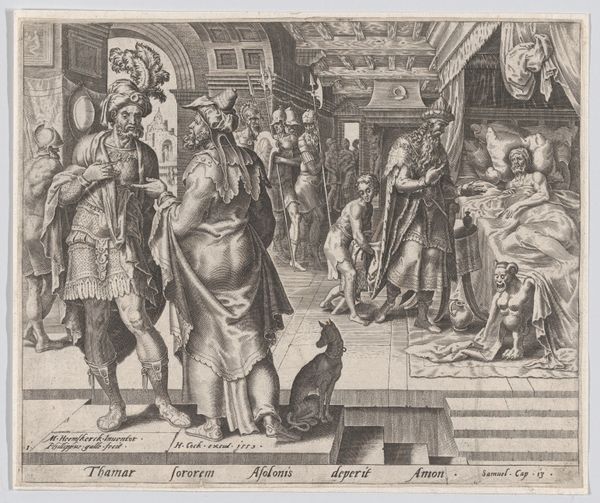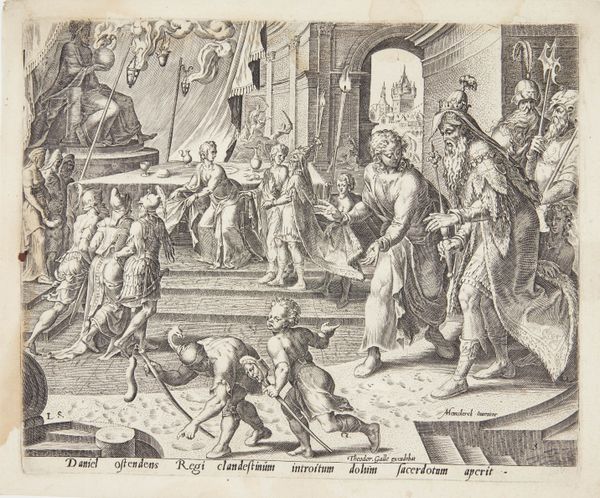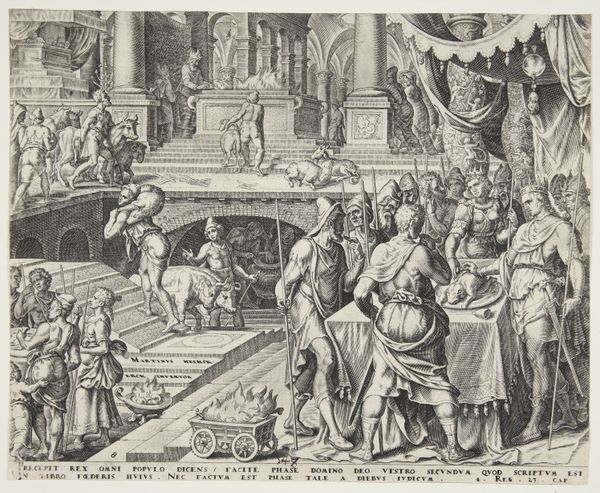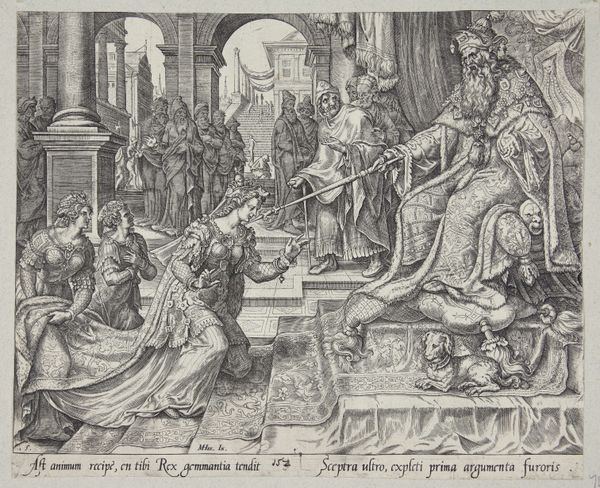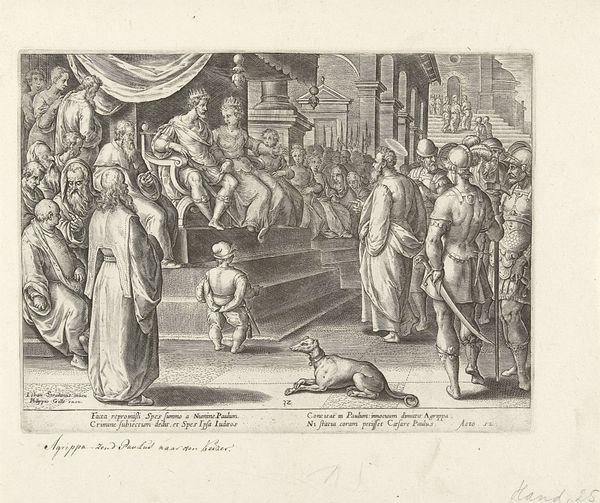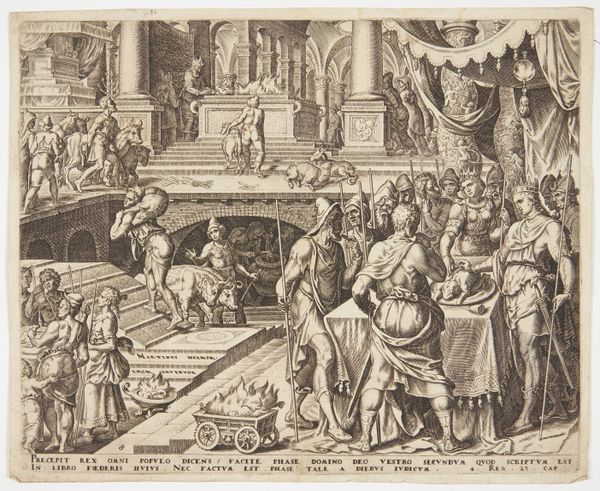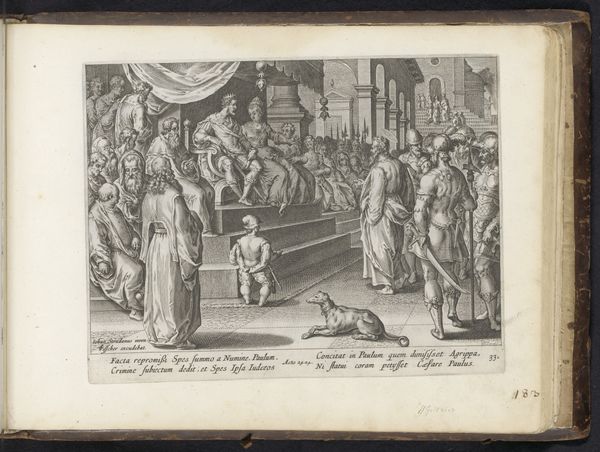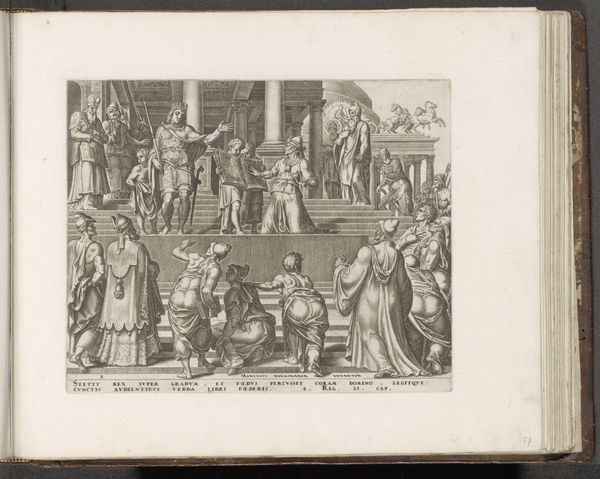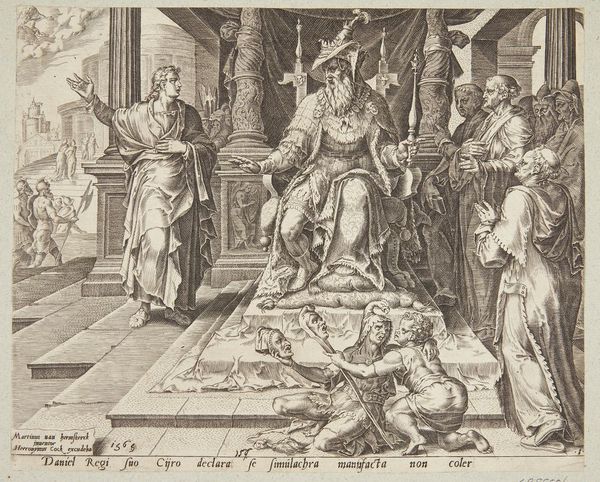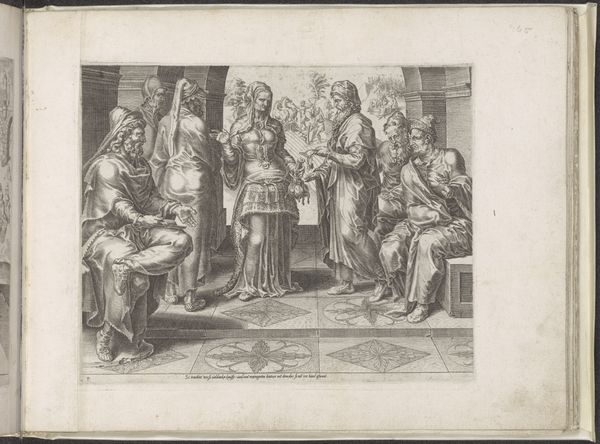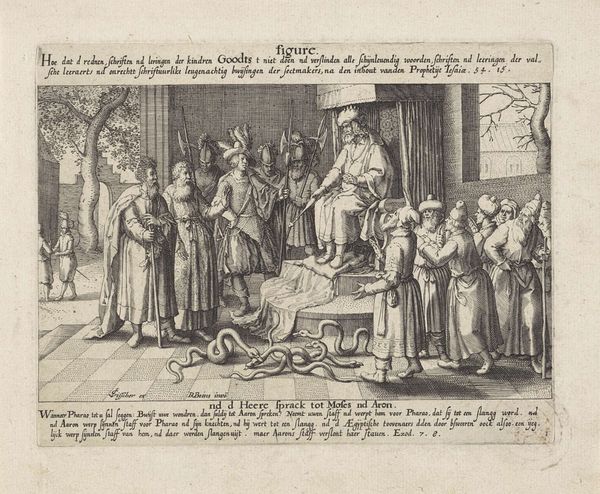
print, engraving
# print
#
mannerism
#
history-painting
#
engraving
Dimensions: 212 mm (height) x 275 mm (width) (plademaal)
Curator: This is an engraving made around 1575 by Philips Galle, depicting "St. Stephen before the high priest and the council." Editor: The scene is immediately striking. I notice the architecture is elaborate but compressed, and a feeling of judgment and accusation fills the composition, almost a premonition. The expressions range from dismissive to outraged. It definitely evokes conflict, but what can you tell me of its symbolism? Curator: Absolutely, Philips Galle situates the story of Stephen within a visual language deeply embedded in the period's religious and political anxieties. As the first Christian martyr, Stephen’s story became important during the Reformation era, standing as a potent example of resistance against perceived religious corruption and injustice. This piece encapsulates a complex interplay of power, dissent, and martyrdom. The artist frames Stephen in a historical moment when questions of religious authority were actively being renegotiated. Editor: Seeing those stern faces arrayed against Stephen truly highlights the feeling of him standing alone. I also see how the dog reclining at the base takes my eye to a frieze of figures gathering stones on the far right: the way this connects the composition, drawing a throughline from power and judgement through to death... it is a harrowing visual commentary on institutionalized violence. Is it trying to draw parallels between that ancient history, and present oppressions? Curator: Precisely! Consider the details within Galle’s artistic style rooted in Mannerism: that artificiality within the figures, with their elongated proportions and dramatic poses, is crucial. It signals the artificiality of that power structure: an emphasis on constructed, almost performative roles and rituals that are about to be disrupted by an authentic challenge to power. The figure is meant to stand outside time, and stand in solidarity. Editor: The halo feels crucial here. It's understated, more a gentle radiance around his head than an outright declaration of divinity, offering a touch of ethereal grace to Stephen and emphasizing that dichotomy with what almost feels like cartoonish evil in the judgemental crowd. What would you say is the defining factor for you, then, considering everything? Curator: I believe what resonates most strongly is the power of an individual standing defiant, despite overwhelming systemic opposition. Editor: For me, it’s the echo of cultural memory - of religious narratives used and reused. It reminds us that stories shape our understanding of justice and injustice, martyrdom and authority.
Comments
No comments
Be the first to comment and join the conversation on the ultimate creative platform.

